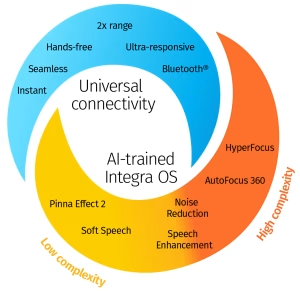

We communicate for a number of reasons. When we are babies we can only communicate by crying or fussing. Parents teach children sign language to help them communicate their needs as it is understood that sign language is easier than expressive language. Later, as we grow up our language skills improve and we can communicate with one another with ease, mostly. Students need to communicate with their teachers and teachers to their students. We communicate for education, for fun, for training, for work, for love, and for other forms of communication in life.
When we get older communication gets more difficult as we start to have vision, hearing, and cognitive declines. Communication is still important. Communication can be as significant as life or death. For instance, when people get instructions on medicine, and they don’t take it as prescribed, getting all the information, it could be life or death.
If you know us, there is nothing better we like than to have a fun conversation and communicate with others. We truly believe that communication is so important it drives our daily focus. When we have people come in to talk to us and they can’t hear, it is hard to communicate. Our first idea is to make sure the person is hearing well, seeing what they can see, and understanding to the best of their abilities.
Recently we read some research by Nicholas Reed’s group at Johns Hopkins (2019) about communicating in the health care system. Here is what his group found:
“Using a large claims dataset, the OptumLabs Data Warehouse, they matched adults with and without hearing loss on many variables including age, race, sex, region, insurance, education, baseline spending, and utilization metrics, and comorbidities and examined health utilization outcomes at 2-year (N=154,414), 5-year (N=44,852), and 10-year (N=4,728) time points. Over a 10-year period, compared to those without hearing loss, those with hearing loss: Here is what they found.
As audiologists, we have the ability to help and we at Hears Hearing & Hearables have put together a program that will work with various healthcare providers, clinics, and even hospitals to help the health care provider communicate with their patients.
To provide meaningful community support we believe consult is critical, providing administration group with the appropriate products to use for their needs in communication, getting the products to the group, and training the group on how to use the products all with great pricing. You would not expect the big business or venture capitalists to get to know non billionaires.
If you need help finding some professional support in your community, we can help!
Let us know if you are interested in learning more.
Thank you.
Kim
Powered By SinglerDesign.com